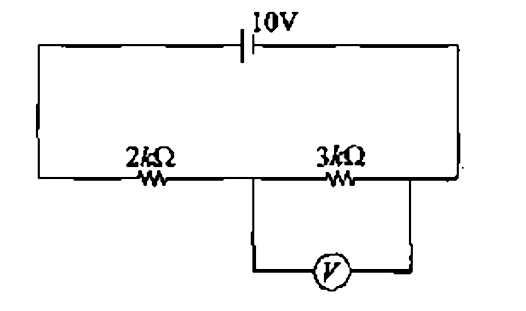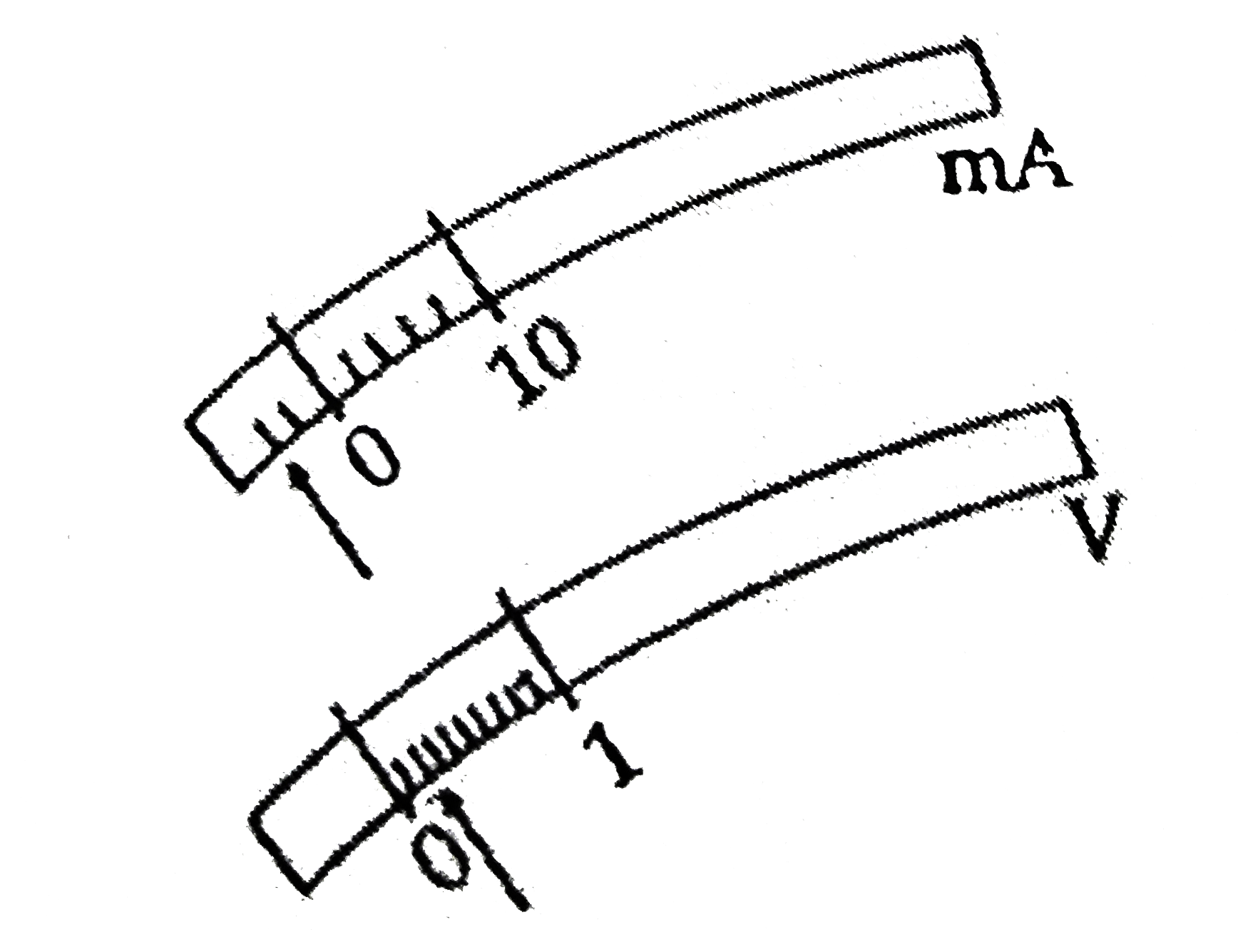Multimeter is used as a voltmeter when
low resistance is connected in parallel to a galvanometer
high resistance is connected in parallel to a galvanometer
low resistance is connected in series to a galvanometer
high resistance is connected in series to a galvanometer
The correct Answer is:D
To understand how a multimeter is used as a voltmeter, we can break down the explanation into clear steps:
1. Understanding the Components:
- A multimeter can function as a voltmeter when it is connected to measure voltage. The main component involved is a galvanometer, which can measure current.
2. Galvanometer Basics:
- The galvanometer has a certain resistance (let's denote it as G) and can measure a maximum current (I). The voltage across the galvanometer can be expressed as:
V=I×G
- This equation shows that the voltage measured by the galvanometer depends on the maximum current and its internal resistance.
3. Need for Higher Voltage Measurement:
- To use the multimeter as a voltmeter, we need to measure higher voltages than what the galvanometer can handle. Since we cannot increase the maximum current (I), we need to increase the voltage range.
4. Increasing Resistance:
- To increase the voltage range, we can increase the effective resistance in the circuit. This can be achieved by connecting a high resistance (R) in series with the galvanometer.
5. Connecting Resistors:
- When we connect a high resistance in series with the galvanometer, the total voltage that can be measured becomes:
V′=I×(G+R)
- Here, R is the high resistance added in series. This configuration allows the multimeter to measure a larger range of voltages.
6. Conclusion:
- Therefore, to use a multimeter as a voltmeter, we connect a high resistance in series with the galvanometer. This configuration increases the voltage range that can be measured, making the multimeter function effectively as a voltmeter.
Final Answer:
A multimeter is used as a voltmeter when a high resistance is connected in series with the galvanometer.
---
- A multimeter can function as a voltmeter when it is connected to measure voltage. The main component involved is a galvanometer, which can measure current.
- The galvanometer has a certain resistance (let's denote it as G) and can measure a maximum current (I). The voltage across the galvanometer can be expressed as:
V=I×G
- This equation shows that the voltage measured by the galvanometer depends on the maximum current and its internal resistance.
- To use the multimeter as a voltmeter, we need to measure higher voltages than what the galvanometer can handle. Since we cannot increase the maximum current (I), we need to increase the voltage range.
- To increase the voltage range, we can increase the effective resistance in the circuit. This can be achieved by connecting a high resistance (R) in series with the galvanometer.
- When we connect a high resistance in series with the galvanometer, the total voltage that can be measured becomes:
V′=I×(G+R)
- Here, R is the high resistance added in series. This configuration allows the multimeter to measure a larger range of voltages.
- Therefore, to use a multimeter as a voltmeter, we connect a high resistance in series with the galvanometer. This configuration increases the voltage range that can be measured, making the multimeter function effectively as a voltmeter.
A multimeter is used as a voltmeter when a high resistance is connected in series with the galvanometer.
Topper's Solved these Questions
- BOOK - NARAYNACHAPTER - EXPERIMENTAL PHYSICSEXERCISE - Level-v(Single answer)23videos
EXPERIMENTAL PHYSICS
- BOOK - NARAYNACHAPTER - EXPERIMENTAL PHYSICSEXERCISE - Multiple answer6videos
EXPERIMENTAL PHYSICS
- BOOK - NARAYNACHAPTER - ELECTROSTATICS AND GAUSS LAWEXERCISE - Intergers type question11videos
ELECTROSTATICS AND GAUSS LAW
- BOOK - NARAYNACHAPTER - MAGNETISMEXERCISE - LEVEL-II (H.W)24videos
MAGNETISM
Similar Questions
Knowledge Check
- Question 1 - Select One
A galvanometer can be used as a voltmeter by connecting
Ahigh resistance in seriesBlow resistance in seriesChigh resistance in parallelDlow resistance in parallel - Question 2 - Select One
A voltmeter is a
Alow resistance galvanometer and is always connected in parallel with a circuitBlow resistance galvanometer and is always connected in series with the circuitChigh resistance galvanometer and is connected in series with the circuitDhigh resistance galvanometer and is connected in parallel with the circuit - Question 3 - Select One
A digital multimeter when used as a continuity tester
Ait is put in the lowest resistance rangeBit is put in the highest resistance rangeCit gives a beepDit will be put off
Why is it that while using a moving coil galvanometer as a voltmeter, a high resistance in series is required whereas in an ammeter a shunt is used?
View SolutionIri the circuit shown in figure-3.334, the resistance of voltmeter is6kΩ. The voltmeter reading will be :
 View Solution
View SolutionA voltmeter is used to measure
View SolutionIn the circuit shown in Fig. 6.50, an idel ammeter and an ideal voltmeter are used. Whan the key is open, the voltmeter reads 1.53V. When the key is closed, the ammeter reads 1.0A and the voltmeter reads 1.03V. The resistance R is
 View Solution
View SolutionThe rest positions of the needles in a Milliammeter and Voltmeter when not being used in a circuit are as shown in the figure. The 'zero error' and 'least count' of these two instruments are :
 View Solution
View Solution

